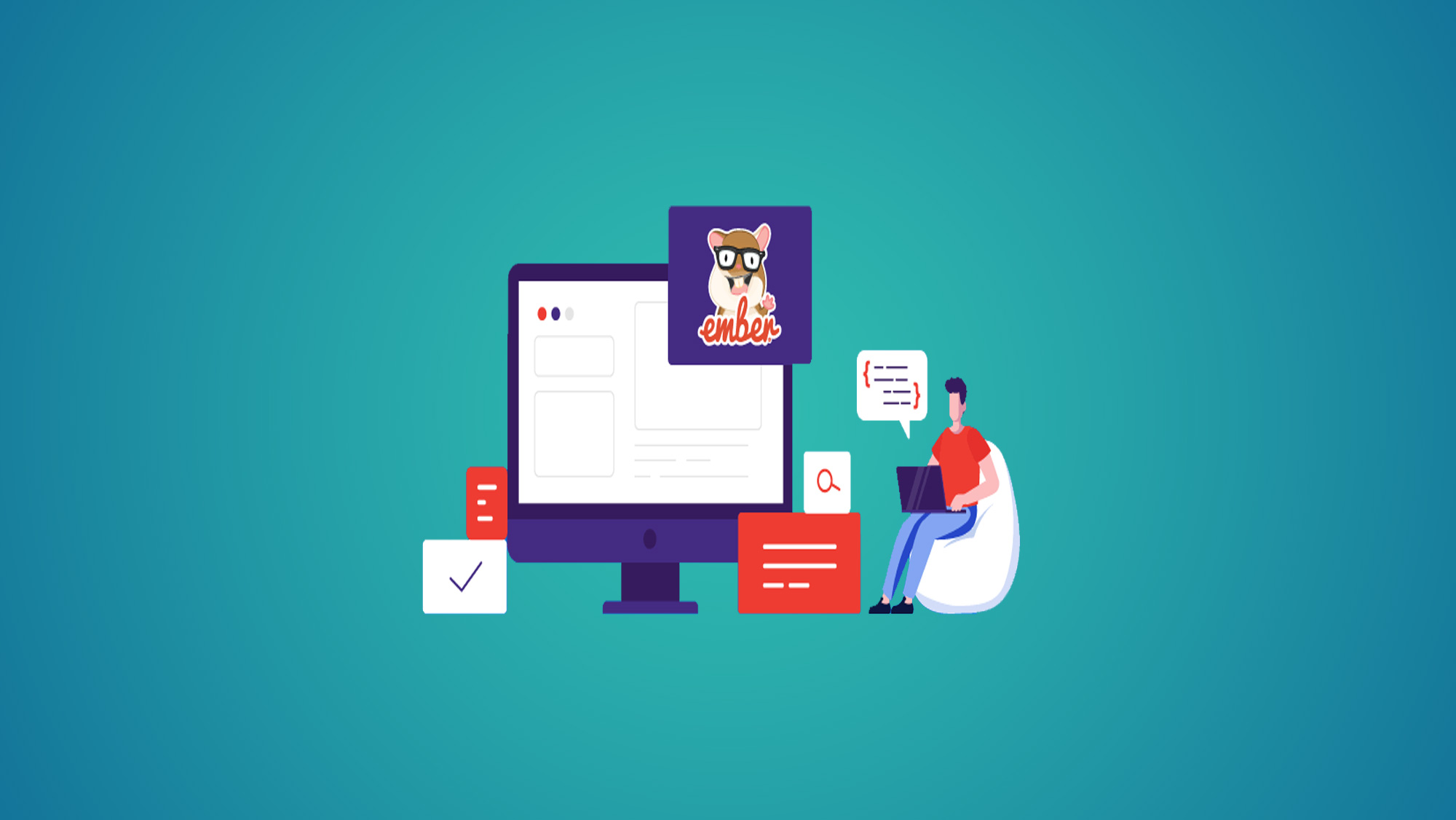Everything You Need To Know About Knockout.js Training
Introduction:
Knockout.js is a popular JavaScript library that simplifies and enhances the development of dynamic and responsive web applications. To leverage the full potential of Knockout.js and become proficient in its usage, comprehensive training is essential. In this blog, we dive into the significance of Knockout.js training, the key components covered, and how it empowers developers to create powerful and interactive web applications.
How does Knockout.js training:
Key features of Knockout.js training:
Preparing for Knockout.js training:
Who can do Knockout.js training:
Career Opportunities for Knockout.js training:
How does Knockout.js training:
Knockout.js training is typically delivered through a combination of theoretical concepts, practical exercises, and hands-on coding examples. The training program is designed to provide developers with a comprehensive understanding of Knockout.js and its usage in building dynamic web applications. Here's how Knockout.js training typically works:
- Introduction to Knockout.js: The training begins with an introduction to the basics of Knockout.js, including its purpose, features, and benefits. Participants learn about the MVVM (Model-View-ViewModel) architecture and how Knockout.js fits into this pattern.
- Data Binding: The training focuses on the core concept of data binding in Knockout.js. Participants learn how to establish data bindings between the model and the view, enabling automatic updates of the user interface when the underlying data changes. They explore various binding options and directives available in Knockout.js.

Read More: Elevate Your Web Development Skills with Knockout.js Training Program |
- Observables and Computed Observables: Training covers the usage of observables, which are special objects that automatically track changes in the data. Participants learn how to create observables, subscribe to changes, and manipulate data using observables. Computed observables, which dynamically update based on other observables, are also explored.
- Templating and Bindings: Participants learn how to use templates and bindings in Knockout.js to create reusable UI components. They explore different types of bindings available and learn how to define custom bindings to extend the framework's functionality.
- Working with Collections and Complex Data: The training covers advanced topics related to managing collections and working with complex data structures in Knockout.js. Participants learn techniques for handling data transformations, filtering, sorting, and manipulating arrays and objects.
- Event Handling and UI Interactions: Training focuses on handling user interactions and events in Knockout.js. Participants learn how to respond to user actions, validate input, and trigger actions based on events.
- Integration and Extensibility: The training covers integrating Knockout.js with other libraries and frameworks. Participants explore techniques for integrating Knockout.js with jQuery, AngularJS, or other JavaScript frameworks. They also learn how to create custom bindings to extend the functionality of Knockout.js.
- Real-world Examples and Projects: Throughout the training, participants work on practical exercises and projects to apply the concepts learned. This hands-on experience allows them to gain confidence in using Knockout.js and understand its practical applications.
Key features of Knockout.js training:
- Comprehensive Coverage: Knockout.js training provides comprehensive coverage of the framework, including its core concepts, data binding techniques, observables, computed observables, templates, and bindings. Participants gain a deep understanding of Knockout.js and its key features.
- Real-world Scenarios: The training incorporates real-world scenarios and use cases to showcase the practical applications of Knockout.js. Participants learn how to tackle common challenges in web application development and use Knockout.js to solve them.
- Interactive Learning: Knockout.js training often adopts an interactive learning approach, encouraging participants to actively engage in discussions, ask questions, and share their experiences. This interactive environment promotes a deeper understanding of the framework and fosters collaboration among participants.
- Expert Guidance: The training is conducted by experienced trainers who have in-depth knowledge of Knockout.js and its best practices. They provide expert guidance, offer insights into industry trends, and address participants' queries and concerns.
- Real-time Feedback: During the training, participants receive real-time feedback on their coding exercises and projects. This feedback helps them understand areas for improvement, validate their understanding of the concepts, and refine their coding skills.
- Integration with Other Technologies: The training explores the integration of Knockout.js with other technologies, such as jQuery, AngularJS, or server-side frameworks. Participants learn how to leverage the strengths of multiple tools and create seamless integrations in their applications.
- Certification Opportunities: Some training programs offer certification upon successful completion, validating participants' knowledge and skills in using Knockout.js. Certifications can enhance career prospects and showcase expertise in the framework to potential employers.
- Ongoing Support and Resources: Participants often gain access to post-training support and resources, including documentation, tutorials, and community forums. This support allows them to continue their learning journey, stay updated with the latest developments in Knockout.js, and seek guidance when facing challenges.
Preparing for Knockout.js training:
Preparing for Knockout.js training can help you make the most out of the learning experience and maximize your understanding of the framework. Here are some key steps to prepare for Knockout.js training:
- Familiarize Yourself with JavaScript: Since Knockout.js is a JavaScript library, having a strong foundation in JavaScript is essential. Review the basics of JavaScript, including variables, data types, functions, arrays, objects, and control flow. Ensure you are comfortable with JavaScript syntax and concepts.
- Understand HTML and CSS: Having a good understanding of HTML and CSS is important as Knockout.js heavily relies on these technologies for building user interfaces. Review HTML tags, attributes, and basic styling using CSS. Familiarize yourself with CSS selectors and how to apply styles to HTML elements.

Read More: Knockout.js Mastery: Unleashing the Power of Dynamic Web Interfaces |
- Learn about MVVM Architecture: Knockout.js follows the MVVM (Model-View-ViewModel) architectural pattern. Familiarize yourself with the MVVM concept, its components, and how it separates concerns in application development. Understanding MVVM will help you grasp the core principles of Knockout.js.
- Review DOM Manipulation: Knockout.js simplifies DOM manipulation by using data bindings. However, it is still helpful to have a basic understanding of how to manipulate the Document Object Model (DOM) using JavaScript. Review DOM manipulation techniques such as selecting elements, modifying attributes, and handling events.
- Explore Knockout.js Documentation: Familiarize yourself with the official Knockout.js documentation. Read through the documentation to understand the key concepts, features, and available bindings. Pay attention to examples and code snippets to get a sense of how to use Knockout.js in practice.
- Set up a Development Environment: Install the necessary tools and software required for Knockout.js development. This typically includes a code editor or integrated development environment (IDE) such as Visual Studio Code, along with a web browser for testing and debugging.
- Complete Pre-training Exercises: If the training program provides pre-training exercises or materials, make sure to complete them. These exercises will introduce you to the basic concepts of Knockout.js and help you get familiar with the framework before the training starts.
- Identify Project Ideas: Think about potential projects or scenarios where you can apply Knockout.js. Having specific project ideas in mind will allow you to relate the training content to real-world scenarios and enable you to practice what you learn during the training.
- Prepare for Active Learning: Be ready to actively engage in the training sessions. Participate in discussions, ask questions, and collaborate with other participants. Take notes during the training to reinforce your understanding of the concepts.
Who can do Knockout.js training:
Knockout.js training is beneficial for a wide range of individuals involved in web development and application building. Here are some specific groups of people who can benefit from Knockout.js training:
- Web Developers: Web developers looking to enhance their front-end development skills can greatly benefit from Knockout.js training. It provides them with the knowledge and expertise to build dynamic and interactive user interfaces using the Knockout.js framework.
- JavaScript Developers: JavaScript developers who want to expand their skill set and learn a popular JavaScript library for data binding and UI development can find value in Knockout.js training. It allows them to leverage Knockout.js's features and techniques to build scalable and efficient web applications.
- UI/UX Designers: User Interface (UI) and User Experience (UX) designers who want to understand the technical aspects of implementing interactive designs can benefit from Knockout.js training. It enables them to collaborate effectively with developers and create seamless user experiences.
- Full-Stack Developers: Full-stack developers aiming to gain expertise in both front-end and back-end development can add Knockout.js to their toolkit. With Knockout.js training, they can develop rich client-side applications that communicate with server-side APIs and databases.
- Software Engineers: Software engineers involved in building complex enterprise applications can enhance their skills by incorporating Knockout.js. The training equips them with the ability to manage data and handle user interactions effectively, resulting in robust and efficient software solutions.
- IT Professionals: IT professionals responsible for managing and maintaining web applications can benefit from Knockout.js training. It enables them to understand the underlying architecture and codebase, making troubleshooting and maintenance tasks more efficient.
- Students and Aspiring Developers: Students and aspiring developers who want to kick-start their careers in web development can gain a competitive edge by learning Knockout.js. It helps them build a strong foundation in front-end development and increases their employability in the job market.
Career Opportunities for Knockout.js training:
Knockout.js training opens up various career opportunities for individuals interested in web development and front-end engineering. Here are some potential career paths and opportunities that can be pursued after completing Knockout.js training:
- Front-End Developer: With proficiency in Knockout.js, you can pursue a career as a front-end developer. You will be able to leverage your knowledge of Knockout.js to build dynamic and interactive user interfaces for web applications. Front-end developers are responsible for translating designs into functional and visually appealing web experiences.
- JavaScript Developer: Knockout.js training equips you with strong JavaScript skills, making you an ideal candidate for JavaScript developer roles. You can work on projects that involve extensive JavaScript development, whether it's building custom web applications or contributing to JavaScript libraries and frameworks.
- UI/UX Developer: User Interface (UI) and User Experience (UX) development often require expertise in front-end technologies like Knockout.js. As a UI/UX developer, you can create engaging and user-friendly interfaces, implement complex UI interactions, and optimize the user experience using Knockout.js.
- Web Application Developer: Many organizations develop web applications using frameworks like Knockout.js. By acquiring expertise in Knockout.js, you can pursue roles as a web application developer, working on projects that require data-driven and highly interactive interfaces.
- Full-Stack Developer: Knockout.js training can be combined with knowledge of server-side technologies to become a full-stack developer. This enables you to handle both front-end and back-end development, giving you more versatility in your career options and the ability to contribute to end-to-end application development.
- Technical Consultant: With advanced skills in Knockout.js, you can work as a technical consultant, providing guidance and expertise on front-end development projects. You can help organizations adopt Knockout.js and optimize their web application development processes.
- Freelance Developer: After acquiring Knockout.js skills, you can work as a freelance developer, offering your expertise in building web applications using Knockout.js to clients. Freelancing allows you to work on diverse projects and gain valuable experience across various industries.
- Application Support Engineer: Organizations that use Knockout.js in their applications often require support and maintenance. By specializing in Knockout.js, you can pursue roles as an application support engineer, responsible for resolving issues, debugging code, and ensuring the smooth functioning of Knockout.js-based applications.
- Software Engineer: Knockout.js skills can complement a career as a software engineer, particularly in organizations that develop software solutions using web technologies. You can contribute to the development of robust and scalable software solutions by incorporating Knockout.js into your technical stack.
Conclusion:
Knockout.js training is essential for developers looking to build dynamic and responsive web applications. By gaining expertise in Knockout.js, developers can create rich and interactive user interfaces, efficiently manage data, and leverage the extensibility of the framework. Whether you are a beginner or an experienced developer, comprehensive Knockout.js training equips you with the skills and knowledge needed to unlock the full potential of this powerful JavaScript library. Start your journey into Knockout.js training and elevate your web application development to the next level.
You May Also Like
These Related Stories

Elevate Your Web Development Skills with Knockout.js Training Program

Knockout.js Mastery: Unleashing the Power of Dynamic Web Interfaces



No Comments Yet
Let us know what you think